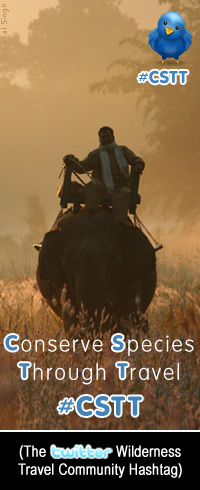Attaching an article by Janaki Lenin for the First Post.
I have lived all my life in tea estates (in Assam) where these plantations forest which encounter high species / biodiversity which come under major conflicts with animal / humans on a regular basis. Recently Assam Company India Limited ( a brief history) - it’s 3 tea gardens in Assam were awarded with the Rainforest Alliance seal of approval / certification which highlighted a lot of responsible mechanism that have been put aside by the company to sustain growth and environmental practices.
It is an on-going responsible activity and the company is making decisions that become a day-to-day good practice.
Involving private owners is a must for conservation practices. Janaki’s context here in her article is primarily south India and private coffee, tea plantation have been referred.
Please have a read through the article.
———————————-
Why private owners must be involved in conservation strategy
Janaki Lenin Sep 4, 2011
The lovely, dark and deep woods are home to thousands of kinds of birds, frogs, reptiles, mammals, plants, fungi, a myriad insects and much more. Moss hangs in long tendrils from tree branches. Sunlight filtered through many layers of leaves reaches the ground with a muted greenish glow. Rainforest’s are natural greenhouses, holding the humidity in and providing a rich culture for life of all kinds to germinate. Indeed, there is more diversity of living beings standing still, wriggling, and flitting about in one square metre of rainforest than any other terrestrial habitat in the world.
Humans hunted and foraged in these jungles 12,000 years ago. Farming started 2,000 years ago, long before it did in most other tropical forests. About 200 years ago, large-scale clearing of forests for cultivation of tea and coffee began. Despite the antiquity of human occupation and usage, a third of the Western Ghats is still covered in forests. But the sad news is only 25% of this natural habitat is strictly protected. Some of the remaining tracts enjoy a modicum of protection, while the rest is splintered into fragments interspersed among vast acreages of commercial plantations. Although these shreds of forests may be small, they support significant wildlife.
It is still common to see large animals such as elephants, gaur, and sloth bears wending their way across these plantations, from one forest patch to another. Smaller creatures go even further, staking territories, hunting prey, and even having babies in these man-made landscapes. As Nisarg Prakash, a Masters student of the National Centre for Biological Sciences, recently found out: where there is adequate prey, crabs and other crustaceans, and vegetation cover for their holts (dens) along the banks, small-clawed otters are found in streams running through tea, coffee, and cardamom in the Anamalai hills. This is especially heartening news since otter pelt is one of the prime items in the illegal wildlife trade.
In 2010, a team of researchers led by M.O. Anand from Nature Conservation Foundation (NCF) set out to understand what encourages wild animals to live in these commercial lands by analyzing 35 studies involving 14 animal groups.
Different crops need varying degrees of forest clearance. After the undergrowth is cleared, cardamom is planted in the shade of forest trees, altering the forest structure the least. Coffee requires more sunlight so some trees are removed. However, to maximize profits, wild trees are increasingly being replaced by the Australian soft-wood, silver oak, which can be harvested for timber pulp. At the other end of the spectrum, tea, rubber, timber trees and paddy completely replace the forest.
Since the landscape is a matrix of these different crops and forest lots, which of these land uses promotes biodiversity? Anand and his colleagues confirmed the obvious: crops that have totally supplanted the forest were wildlife-impoverished, sustaining the least number of life forms. Conversely, plantations of cardamom and coffee grown under forest trees fostered high biodiversity but not nearly as much as forests did. But more than any other factor, it was the size of the nearest forest block that mattered; the larger the forest patch, the richer the biological wealth of the surrounding agricultural areas.
Under these circumstances, what conservation strategy should be pursued? There is no doubt that wildlife-friendly farming practices, such as advocating coffee grown under forest trees, would help enormously. But if the forest fragments were so crucial to sustaining various life forms, they need to be protected as a matter of priority, argue the researchers.
Forests patches are owned by private companies, individuals, and the Revenue and Forest Departments of the government. In some places, communities manage wooded chunks as sacred groves. Although these stands of wilderness were originally left standing to conserve watersheds and are protected by law, local people graze livestock, cut trees for timber, fuel wood, and to expand their agricultural holdings. Since setting these forests aside for conservation would entail an economic loss to companies and individuals, incentives such as certification could offer a solution.
One such certifying agency, Rainforest Alliance, and the Indian conservation organization, NCF, are members of the Sustainable Agriculture Network, a consortium of NGOs around the world, that have developed the Sustainable Agriculture Standard. T.R. Shankar Raman and Divya Mudappa of NCF conduct training programs for landowners seeking the Rainforest Alliance seal of approval. Applicants have to abide by the Standard, demonstrating improved living and working conditions of their work force and/or concessions for wildlife conservation.
A key criterion for eligibility is discontinuing the use of internationally banned agrochemicals. Even acceptable chemicals have to be treated responsibly. Employees who spray crops are provided special bathrooms, and their containers and clothes washed in designated areas. The contaminated water is channelled to soak pits or treatment facilities.
Since large dangerous animals, such as elephants and leopards, pose a threat to workers collecting firewood in forest fragments, managers of plantations are encouraged to provide fuel efficient stoves, or even better, gas cylinders and solar water heaters.
Drawing up an inventory of wildlife found in their forests and plantations is a necessary part of the certification process, and so far it has totalled up more than 100 animal and 150 plant species, including many endemic and threatened species, in the Nilgiri and Anamalai hills.
Smallholders, usually coffee plantations with no forest fragments, have the option of obtaining group certification. For instance, neighbouring farms can get together and stop coffee pulp effluent from contaminating streams; instead, it’s diverted to treatment facilities. They can also protect community forests or co-operate with the Forest Department to prevent poaching and fires in National Parks and Sanctuaries. By goading landowners to do more for their workers and the environment, these certification programs, in effect, turn them into better land stewards.
The incentive for making these changes is the increased prices that certified commodities fetch in the export market. Conscientious buyers of certified tea and coffee pay between Rs. 7 to Rs. 21 per kg. more than the average price. Disappointingly, should these Rainforest Alliance approved products enter the domestic market, they fetch no more than the rest. Creating awareness and demand for such produce in India would go farther in encouraging landowners to be ecologically and socially responsible.
Safeguarding fragments of forests will provide greater mileage not only for the biodiversity of adjacent farmlands but protected forests such as parks and sanctuaries. Such protected forests make up only 9% of the land area of the Western Ghats. Since they are too few, small and far between, and animals move in and out of them, conservation management cannot stop abruptly at its boundaries. By including private players in the overall conservation strategy, there is a good chance of retaining nearly 40,000 unprotected sq.km. of natural habitat, an area almost three times larger than National Parks and Sanctuaries. As India moves rapidly up the population and consumption ladder, people, in the Forest Department and conservation world, with the protected area fixation better wake up and smell the coffee.
Article referenced: First Post






















 Twitter
Twitter Facebook
Facebook RSS
RSS